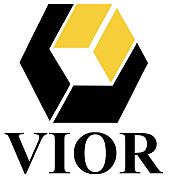 Appia begins metallurgical testing Alces Lake samples
Appia begins metallurgical testing Alces Lake samples
2021-02-25 12:00 ET – News Release
Mr. Tom Drivas reports
APPIA STARTS BENCH-SCALE MONAZITE PROCESSING AND METALLURGICAL TESTING WITH SASKATCHEWAN RESEARCH COUNCIL
Appia Energy Corp.’s bench-scale monazite processing and metallurgical testing has started at the Saskatchewan Research Council (SRC). SRC will be using sample materials from Appia’s high-grade rare earth element, gallium and uranium Alces Lake property, located in Northern Saskatchewan.
The goal of the test is to process monazite-bearing rocks from the property to produce a mixed REE carbonate. The scope of work will include sample preparation and characterization, monazite beneficiation and monazite concentrate processing, and finally producing a mixed REE carbonate. The recovery of a phosphate byproduct will also be examined. Approximately 50 kilograms of monazite-bearing sample material from the WRCB zone of the property with a representative grade of approximately 9 per cent to 10 per cent total rare earth oxide (TREO) will be used for the test.
The test is expected to take approximately three months to complete with a full report delivered to the company. Following the results of the test, an assessment will be made to pursue the next step of metallurgical testing and convert the REE carbonate to REE oxides.
James Sykes, Appia’s vice-president of exploration and development, comments: “This is a major step forward for the company. Mineralization grades at Alces Lake are amongst the highest in the world and comparable with mining operations that are successfully producing REE oxides. The test work being carried out at SRC will determine the ease of metallurgical processing and recovery of REE end products. Monazite is one of the most important REE-bearing minerals producing REE oxides today and we remain confident that the Alces Lake monazite will be processed with similar results to economic REE operations. We are pleased to have SRC performing the test for us, as they are recognized global leaders in this field of research.”
The company is fully financed and committed to completing the largest exploration and diamond drilling program on the property to date during the summer months of 2021.
Processing and metallurgical test work
The test will characterize the effects of monazite beneficiation by way of gravity and magnetic separation and flotation testing. Heavy liquid gravity separation will be used to remove primarily light waste minerals such as quartz, plagioclase, K-feldspar, chlorite and mica. Magnetic separation techniques will determine the effectiveness of the removal of magnetic iron minerals and other non-magnetic minerals. The remaining concentrate after the two separations will be combined and used to evaluate the effectiveness of flotation testing, which is one of the most common methods to recover and concentrate monazite from ore deposits. The end goal of these processes is to produce a high-grade monazite concentrate with a target grade of 55 to 60 per cent by weight TREO for downstream hydrometallurgical testing.
The monazite concentrate will then be ground to a fine powder and followed with caustic cracking where the monazite will be decomposed in a strong basic solution of caustic soda, converting the REE phosphate to REE hydroxides. The solid REE hydroxide will be used for acid selective leach tests, and the filtrate and washes will be used for phosphate recovery tests.
Acid selective leaching will be used to dissolve the solid REE hydroxide residue and to test the initial separation of REEs from radioactive elements such as thorium and uranium, as well as iron. An REE pregnant leach solution is expected to be produced at the end of the acid selective leaching process. Tests to remove radium and other impurities, if any, will also be trialled with subsequent purification processes. Following the purification processes, a purified REE chloride solution is expected to be obtained, which would then be used to precipitate a mixed REE carbonate by the addition of sodium bicarbonate.
The liquid portion derived from the caustic cracking process is anticipated to be enriched with phosphate and caustic soda. The solution will be evaporated to recover a phosphate byproduct by crystallization. The unreacted caustic soda in the mother liquor can be recycled and reused in the caustic cracking process. Prior to phosphate byproduct recovery, the solution might contain radioactive materials and therefore an additional two-step process will be applied to remove the radioactive contaminants and improve phosphate byproduct purity.
All solid, liquid and radioactive wastes produced from both beneficiation and hydrometallurgical tests will be disposed of following SRC’s waste disposal protocols and using its facilities.
Alces Lake summary
The property encompasses some of the highest-grade total and critical rare earth elements (CREEs) and gallium mineralization in the world. CREEs are defined here as those rare earth elements that are in short supply and high demand for use in permanent magnets and modern electronic applications such as electric vehicles and wind turbines (neodymium, praseodymium, dysprosium and terbium). The Alces Lake project area is 17,577 hectares (43,434 acres) in size and is 100 per cent owned by Appia. The project is located close to an old mining camp with existing support services, such as transportation (15 kilometres from the nearest trail), energy infrastructure (hydroelectric power), a 1,200-metre airstrip that receives daily scheduled services and access to heavy equipment.
Since detailed exploration began at Alces Lake in 2017, a total of 74 REE, gallium and uranium-bearing surface zones and occurrences over 45 kilometres of the system have been discovered on the property. To date, less than 1 per cent of the property has been explored with diamond drilling. The property is also located in Saskatchewan, the same provincial jurisdiction that has planned to develop a first-of-its-kind rare earth processing facility in Canada, which is scheduled to become operational by 2022.
The technical content in this news release was reviewed and approved by Dr. Irvine R. Annesley, PGeo, adviser to Appia’s board of directors and a qualified person as defined by National Instrument 43-101.
About Appia Energy Corp.
Appia is a Canadian publicly traded company in the uranium and rare earth element sectors. The company is currently focusing on delineating high-grade critical rare earth elements and uranium on the Alces Lake property, as well as prospecting for high-grade uranium in the prolific Athabasca basin on its Loranger, North Wollaston and Eastside properties. The company holds the surface rights to exploration for 65,601 hectares (162,104 acres) in Saskatchewan.
The company also has a 100-per-cent interest (subject to a 1-per-cent uranium production payment royalty and a 1-per-cent net smelter return royalty on any precious metal or base metal payable, provided that the price of uranium is greater than $130 (U.S.) per pound) in 12,545 hectares (31,000 acres), with rare earth element and uranium deposits over five mineralized zones in the Elliot Lake camp in Ontario. The camp historically produced over 300 million pounds of U3O8 (triuranium octoxide) and is the only Canadian camp that has had significant rare earth element (yttrium) production. The deposits are largely unconstrained along strike and down dip.
We seek Safe Harbor.






















